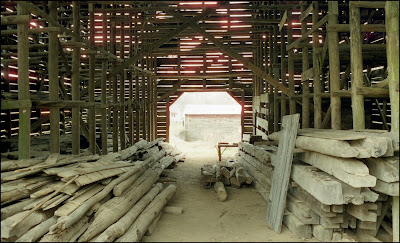I was recently contacted by Reflx Lab to see if I’d like to try out their 200T 35mm film, and of course, I said yes. There are so many new rebranded films turning up now, that it’s getting hard to keep track of them. In 2022, I reviewed their 400D ECN-2 film which was Eastman Vision 3 250D with the remjet layer already removed, so that it could be processed in any lab offering C-41 service. That was “early days” for Reflx Lab, and I pointed out a few minor defects in the emulsion on the rolls, as well as light piping at the beginning. Otherwise, I still liked what I saw.
Unless you have been in a cave or the middle of the Amazon forest for the past few years, you know that the Cinestill brand has been selling Kodak ECN-2 films with the remjet removed, and in their branding, advertised every ECN-2 film with a raised ISO, supposedly because the remjet removal raised the sensitivity. I think that’s just marketing bullshit, but it created a unique niche that until recently, had been occupied only by them. So, in late 2023, when other resellers started selling the same exact films with the remjet removed, Cinestill took aggressive action because they’d been granted a trademark status on 800T. While it was certainly wrong for them to claim 800T as a trademark, it opened a whole lot of ill will towards Cinestill, and much of it was deserved. So, in the aftermath, other brands have come up with unique ways to advertise their remjet-removed Vision 3 films. That’s where Reflx Lab comes in with their 200T film in this review.
The Reflx Lab 200T box uses a stylized T that looks like a lamp bulb. Ingenious! The other thing about this film is that it really is a 200 ISO Tungsten-balanced film. It’s Kodak Vision 3 200T, but with the remjet layer already removed so that it can be safely developed at your local lab.
A couple of things about the remjet layer that you should know by now. First, it acts as an antihalation layer, and second, it acts as an antistatic layer and third, it sort of lubricates and avoids scratches as the the film travels through the movie camera. That’s significant, because cine film moves far faster through a movie camera than a 35mm still camera. Without the remjet in a still camera, the only real problem will be from the removal of the antihalation properties. That means you’ll be more likely to see “blooming” from point light sources or backlit scenes. In a color film, it’s going to result in reddish tints from the halation. Some photographers love the effect, especially in shooting night scenes. I’m most familiar with the halation in b&w films, and it can be a good thing in the right circumstances. So, it’s just something that you should be aware of, if you choose to shoot any ECN-2 film that’s had the remjet pre-removed.
I put a roll of the 200T in my Nikon N75, and shot the roll within a couple of days in early January. After I shot the first few frames, I remembered to attach an 85 filter to compensate for shooting in daylight with the Tungsten-balanced film. The film cassette is DX-coded, so if you are using a camera that requires a DX code (such as the N75), you will be just fine using the Reflex Lab film. I only had a few shots indoors, and I took off the 85 filter for those. After I finished the roll, it was processed by my local lab in Asheville- Ball Photo.
The Reflx Lab 200T film scanned easily in my Epson V700, and the results are very good overall. However, as you will see below, backlighting and point light sources cause halation with reddish blooming.
 |
| a little blue-ish, no #85 filter |
 |
| that light poking between the boards, and it was not sunny |
 |
| great color rendition |
 |
| You can really see the halation with the light peeping between those boards! |
 |
| a very well-rendered scene |
 |
| those spotlights... |
Comparing this film with my experience from 2022, shows a very improved process from Reflx Lab. There was no light piping at the beginning/end of the roll, no strange artifacts, and no residual remjet. In fact, the film is as good as any C-41 film that I have used - however, as I stated earlier, halation needs to be taken into consideration when planning your shots. I’ve only shot one roll so far, and I’ll shoot another roll in the evening sometime to see how well the Tungsten-balanced film looks indoors with good lighting, and also with neon signs.
There are many choices now that other companies have figured out how to remove the remjet layer from ECN-2 films before packaging them for the consumer. You can send your money to Cinestill, Reflx Lab, or to Reto, and try these films for yourself. Personally, I like the Reflx Lab films, and they are now found on the shelves in brick and mortar photo stores. That’s good news for the consumer, and there are more choices than ever. However, if you like the DIY approach, there’s no shame in buying regular ECN-2 films and doing the remjet removal as part of your developing process. You’ll certainly avoid the halation problem, and also save a bit of money as well.
Overall, yes, I like the Reflx Lab 200T, and I am looking forward to shooting more of it. Maybe I’ll even try some “800T,” but without the Cinestill branding.








